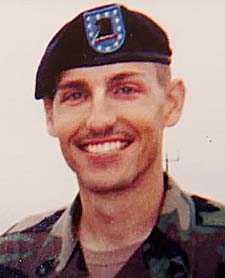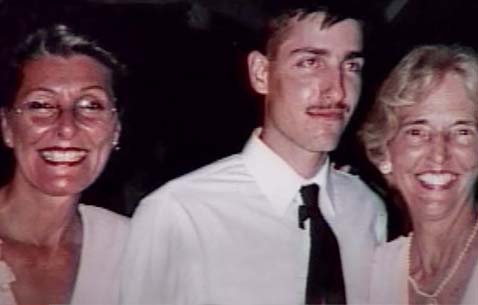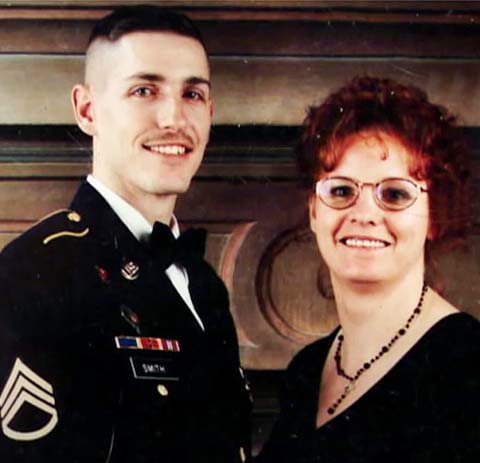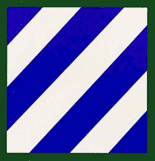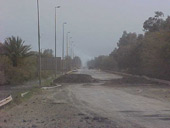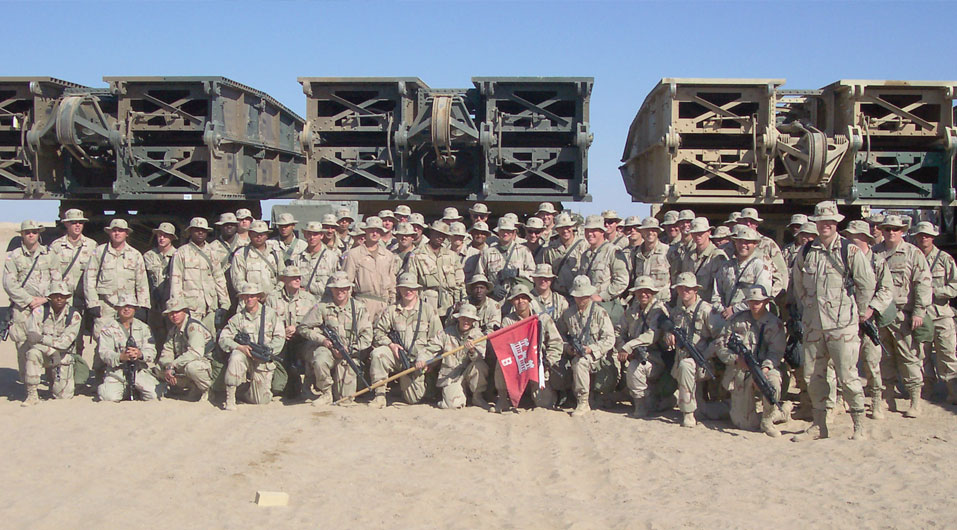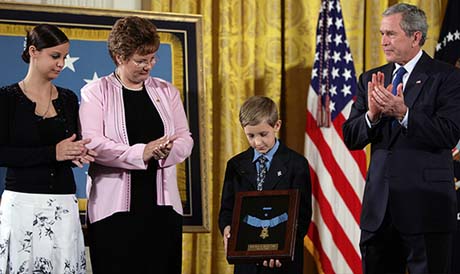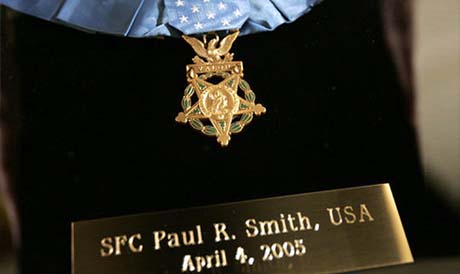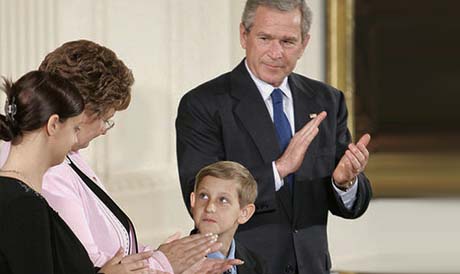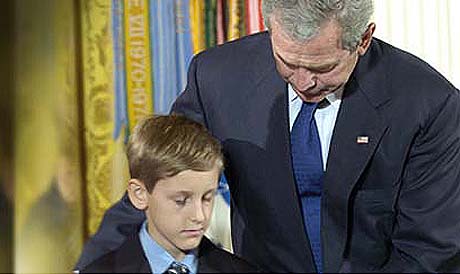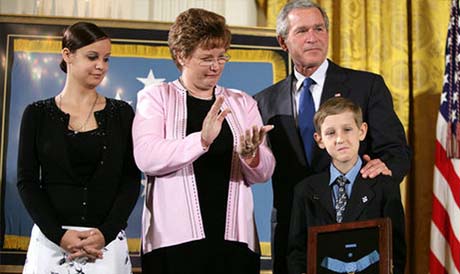Biography
The personal character of Sgt. 1st Class Smith is best described through anecdotes his sister related in a speech about her brother: “Paul Ray had an incredible love for the troops under his command. One Christmas, the wife of a Soldier in Paul Ray's platoon had just had surgery and the Soldier and his wife were unable to provide a Christmas for their family. So, Smith collected food from the company Christmas party, and he and Birgit bought presents for the children, and they took them to the Soldier's home.”
Smith's family never heard of this until recounted to them by friends after his death. Another story that illustrated Smith's concern for his men invoved a Soldier whose baby daughter was unexpectedly admitted to the hospital with a serious illness. Smith would drive an hour out of town every night to give his support to this Soldier and his wife. In the last letter that Smith wrote to his parents from Iraq, he told them that now that he was a father himself, he realized just how much they had sacrificed to make his life a good life and he thanked them for that special effort. He spoke of being prepared to give — as he said — "all that I am, to ensure that all my boys make it home." In that same letter he expresseed how proud he was of the "privilege to be given 25 of the finest Americans we call Soldiers to lead into war" and that he recognized their fears and his responsibilities for their welfare.
"...prepared to give all that I am, to ensure that all my boys make it home."
Paul Ray Smith was born on September 24, 1969, in El Paso, Texas. At the age of nine, his family moved to South Tampa, Florida, where he attended public schools. He enjoyed sports, liked cats, skateboarding, riding bicycles, and playing pranks with friends and his younger sister Lisa. He particularly enjoyed football, which instilled the importance of being part of a team and motivated his natural leadership abilities.
He developed an interest in carpentry while in high school and was employed part-time as a carpenter assistant. Smith had an interest in old cars — he enjoyed taking things apart to see how they worked. He restored a dune buggy with a friend. He liked to collect things from the sea such as rocks and marbles. His family remembered that as far back as they could recall, when anyone would ask what he wanted to do as an adult, he always said, "I want to be a Soldier, get married, and have kids."

The Sapper tab is awarded to and worn by graduates (such as Sgt. 1st Class Smith) of the Sapper Leader Course. Sappers are combat engineers who advance with the front-line infantry, specially-trained to combine leadership, combat engineer and infantry skills to build and/or breach fortifications, execute mining and de-mining operations, and often be the first to face the enemy.
Learn more about U.S. Army Sappers
Upon graduating from Tampa Bay Vocational Technical High School in 1988, he joined the Army and attended basic training at Fort Leonard Wood, Missouri. As his mother wrote in his biography for a dedication ceremony in Orlando, he had begun living his dream. He was assigned to Germany, met and married his wife, Birgit, had two children, and was "doing what he was born to do ... Lead American Soldiers ..." Sgt. 1st Class Smith served as a combat engineer and was deployed to Kuwait during the Persian Gulf War, Bosnia-Herzegovina, Kosovo and finally to Operation Iraqi Freedom.
Sgt. 1st Class Smith joined the 11th Engineer Battalion in 1999 and immediately became an integral part of Bravo Company. When he deployed with his platoon to Kosovo in May 2001, as part of the KFOR 3A rotation, Smith was responsible for daily presence patrols in the highly populated town of Gnjilane. In the spring of 2002, he was promoted to sergeant first class and completed the Advanced Non-Commissioned Officer Course in August 2002.
In January 2003, Sgt. 1st Class Smith returned from leave to prepare his men for rapid deployment to Kuwait as part of the 3rd Infantry Division's buildup for Operation Iraqi Freedom. Smith took a strict approach to training his men, ensuring that his platoon was proficient in handling weapons and prepared for urban combat.
Bravo Company crossed the border on March 19th and traveled more than 300 kilometers in the first 48 hours of the war as part of the lead company in support of Task Force 2-7 Infantry. Passing through the Karbala Gap, Smith and his men pushed through the night of of April 3, 2003, towards Baghdad Airport where Bravo Company, 11th Engineer Battalion of Task Force 2-7 were involved in a firefight with Iraqi forces. Sgt. 1st Class Smith's heroic actions and tragic death are described in more detail in the battlescape section of this website and in his Medal of Honor citation.
Throughout his career, Smith was honored with many awards and decorations, including: the Bronze Star, the Purple Heart, the Army Commendation Medal (with four oak leaf clusters), the Army Achievement Medal (with five oak leaf clusters), the Good Conduct Medal (third award), the National Defense Service Medal, the Armed Forces Expeditionary Medal, the South West Asia Service Medal (with three bronze stars), the Global War on Terrorism Service Medal, the Global War on Terrorism Expeditionary Medal, the Army NCO Professional Development Ribbon (second award), the Army Service Ribbon, the Overseas Service Ribbon (third award), the NATO Medal (Kosovo), the Kuwait Liberation Medal (Saudi Arabia), the Kuwait Liberation Medal (Kuwait), the Valorous Unit Award, the Army Superior Unit Award, the German Marksmanship Badge and the French Armed Forces Commando Badge.
In 1999 Smith was posted to the 11th Engineer Battalion, with which he was deployed to Kosovo in May 2001, where he was responsible for daily presence patrols in the town of Gnjilane. In the spring of 2002, he received a promotion to sergeant first class and completed the Advanced Non-Commissioned Officer Course in August 2002.

